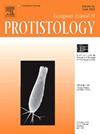Temperature-dependent resistance to starvation of three contrasting freshwater ciliates
Abstract
We investigated the temperature-dependent response to starvation of three contrasting freshwater ciliates (Ciliophora). The cyst-forming algivorous species Meseres corlissi and the bactivorous species Glaucomides bromelicola, which cannot form cysts, co-occur in the reservoirs (tanks) of tree bromeliads. The mixotrophic species Coleps spetai is common in many lakes. We hypothesized that the ciliates’ different traits and life strategies would affect their survival rates and temperature sensitivity under food depleted conditions. We measured the decline of the ciliate populations in microcosm experiments at different temperatures for several days. We used an imaging flow cytometer to size the ciliates and documented their morphological and physiological changes in response to starvation. We found that the cyst-forming species had the highest mortality rates but may endure long-term starvation by encystment. The sympatric, non-encysting species suffered the lowest mortality rates and could survive for more than three weeks without food. The mixotrophic species had intermediate mortality rates but showed the highest phenotypic plasticity in response to starvation. A significant fraction of the C. spetai population appeared unaffected by starvation, suggesting that the endosymbionts provided some resources to the host cells. The mean mortality rate per day of all three species increased with temperature by 0.09 °C−1.

 求助内容:
求助内容: 应助结果提醒方式:
应助结果提醒方式:


